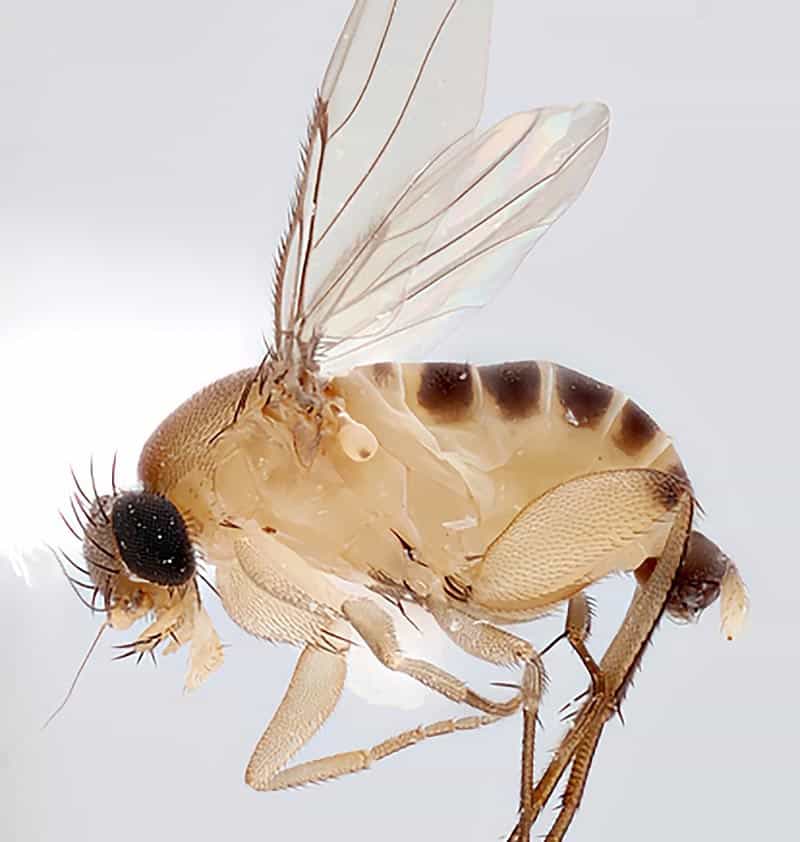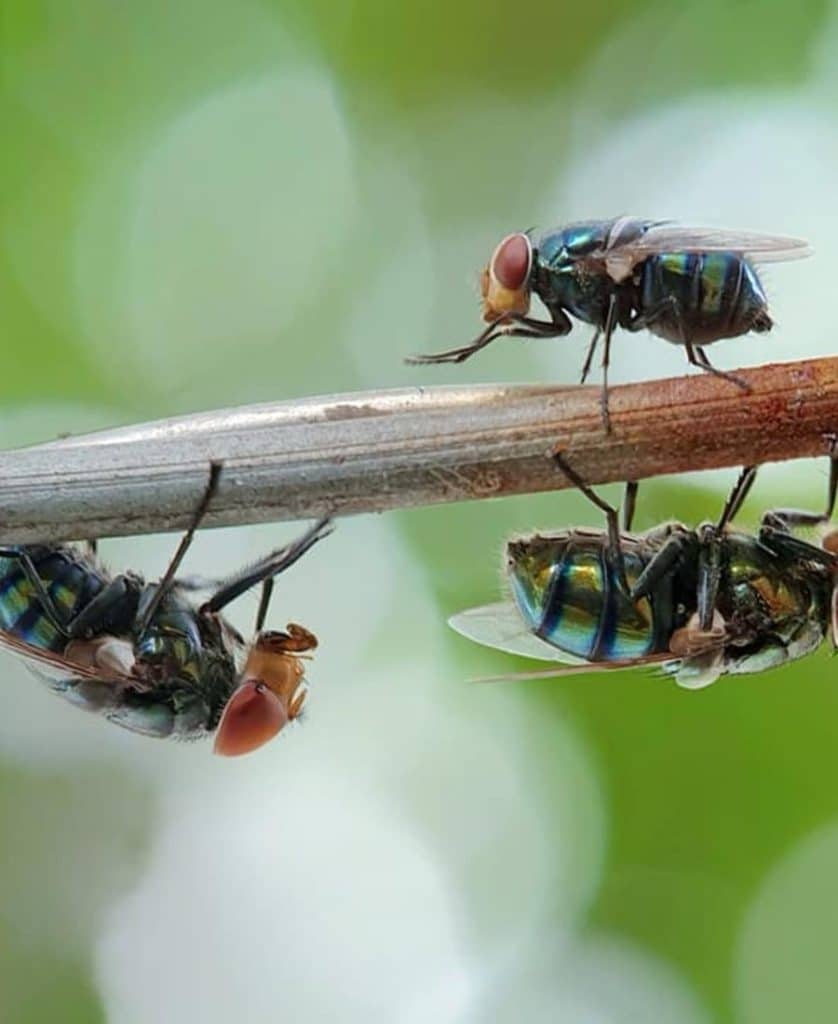REQUEST YOUR FREE INSPECTION

Fly Control Upstate, NY
Phorid flies are a common nuisance in New York State and Vermont. They can be found in and around drains, garbage disposals, mops, dishwashers, humidifiers, toilets and other wet places where they feed off the organic matter and fungi found there. These pests can reproduce quickly with adult female phorid flies able to lay up to 200 eggs per day which can then hatch into larvae within 72 hours.
Although they do not bite humans or animals they can become an annoyance when they infest homes, restaurants, and other commercial buildings. To prevent infestation it is important to regularly inspect areas that may have standing water such as sinks and bathtubs for any signs of Phorids flies or their larvae.
If you are already experiencing an infestation it is best to contact Bug-U Pest Control for assistance in controlling and eradicating these pesky pests.
The best line of defence against cluster flies is to prevent their entrance into buildings. Where possible, seal up cracks in the siding and around windows with caulking and cover attic vents with wire screening before the Fall starts. Cluster flies are usually sluggish and make little attempt to escape, so they can easily be picked up with a vacuum cleaner or swatted with a fly swatter. If you use a vacuum cleaner to clear up sluggish flies, remove the bag and place it outdoors, or the flies inside may crawl back out.
Drain Flies
Drain flies, also known as moth flies or sewage flies, are small insects commonly found in and around drains in New York State and Vermont. These insects have a wingspan of 1/8th inch to 1/4th inch, making them very small and difficult to see. Drain flies usually live near moist areas such as drains, but they can sometimes be found in other damp places like sinks and gutters. These flies typically lay their eggs in the film of slime that coats the walls of drains and other moist areas. Once the eggs hatch, the larvae feed on organic material before pupating into adult flies.
Drain fly larvae feed on organic material such as grease, soap scum, dead skin cells, and food particles. They often thrive in environments that don’t get cleaned regularly because the accumulation of these materials provides them with an ideal breeding ground.
Drain flies can be a nuisance when they enter homes and commercial buildings. To prevent an infestation, it’s important to keep all drains clean and free from organic materials such as food particles, soap scum, and grease buildup. This will help reduce the number of drain fly larvae in your home and make sure they don’t have an opportunity to thrive. Then call Bug-U Pest Control. We’ll do the rest.

Call Bug-U Pest Control Today for a Free Quote.
Call us at (518) 747-2003

Cluster Flies
The large sluggish flies known as cluster or “attic” flies (Pollenia rudis and relatives) often invade homes in fall and turn into wintertime pests. They are particularly noticeable on warm winter days when they become active and find their way into living quarters. Just when you think you have them under control, more appear the next day, creating the impression they are breeding inside the house. In reality, they are only using your home as a place to spend winter and do not cause damage to the buildings, furniture, or occupants.
The best line of defence against cluster flies is to prevent their entrance into buildings. Where possible, seal up cracks in the siding and around windows with caulking and cover attic vents with wire screening before the Fall starts. Cluster flies are usually sluggish and make little attempt to escape, so they can easily be picked up with a vacuum cleaner or swatted with a fly swatter. If you use a vacuum cleaner to clear up sluggish flies, remove the bag and place it outdoors, or the flies inside may crawl back out.
Fruit Flies
Fruit flies are found throughout the United States and are known for their ability to rapidly reproduce. They can be found indoors year-round, and depending on the conditions, their lifespans can last 25 to 30 days. Adult fruit flies are typically 3 to 4 mm long and appear to be brown or tan in color. They usually have red eyes, but some fruit flies have darker eyes. They have a tan thorax with a black and grey abdomen. Fruit flies have six legs and are small and oval in shape with antennae.
Fruit flies are attracted to and eat rotting food matter, especially fruits and vegetables, and any fermenting liquids, like beer, liquor and wine. They are also attracted to and sometimes breed in dark, moist and unsanitary environments like drains, garbage disposals and trash bins. Fruit flies are able to reproduce very quickly, making them difficult to control. Female fruit flies can lay around 500 eggs, which can hatch in as little as 24 hours. Similar to other fly species, fruit flies have a four-stage lifecycle, which can be completed in as little as a week in ideal conditions.
Not only are fruit flies a nuisance pest, but they are also capable of contaminating food with harmful bacteria and disease-causing pathogens, since they are typically found in unsanitary conditions, just like house flies.


Fruit Flies
Fruit flies are found throughout the United States and are known for their ability to rapidly reproduce. They can be found indoors year-round, and depending on the conditions, their lifespans can last 25 to 30 days. Adult fruit flies are typically 3 to 4 mm long and appear to be brown or tan in color. They usually have red eyes, but some fruit flies have darker eyes. They have a tan thorax with a black and grey abdomen. Fruit flies have six legs and are small and oval in shape with antennae.
Fruit flies are attracted to and eat rotting food matter, especially fruits and vegetables, and any fermenting liquids, like beer, liquor and wine. They are also attracted to and sometimes breed in dark, moist and unsanitary environments like drains, garbage disposals and trash bins. Fruit flies are able to reproduce very quickly, making them difficult to control. Female fruit flies can lay around 500 eggs, which can hatch in as little as 24 hours. Similar to other fly species, fruit flies have a four-stage lifecycle, which can be completed in as little as a week in ideal conditions.
Not only are fruit flies a nuisance pest, but they are also capable of contaminating food with harmful bacteria and disease-causing pathogens, since they are typically found in unsanitary conditions, just like house flies.


Do you have flies & gnats?
Call Bug-U Pest Control right away at 518-747-2003

